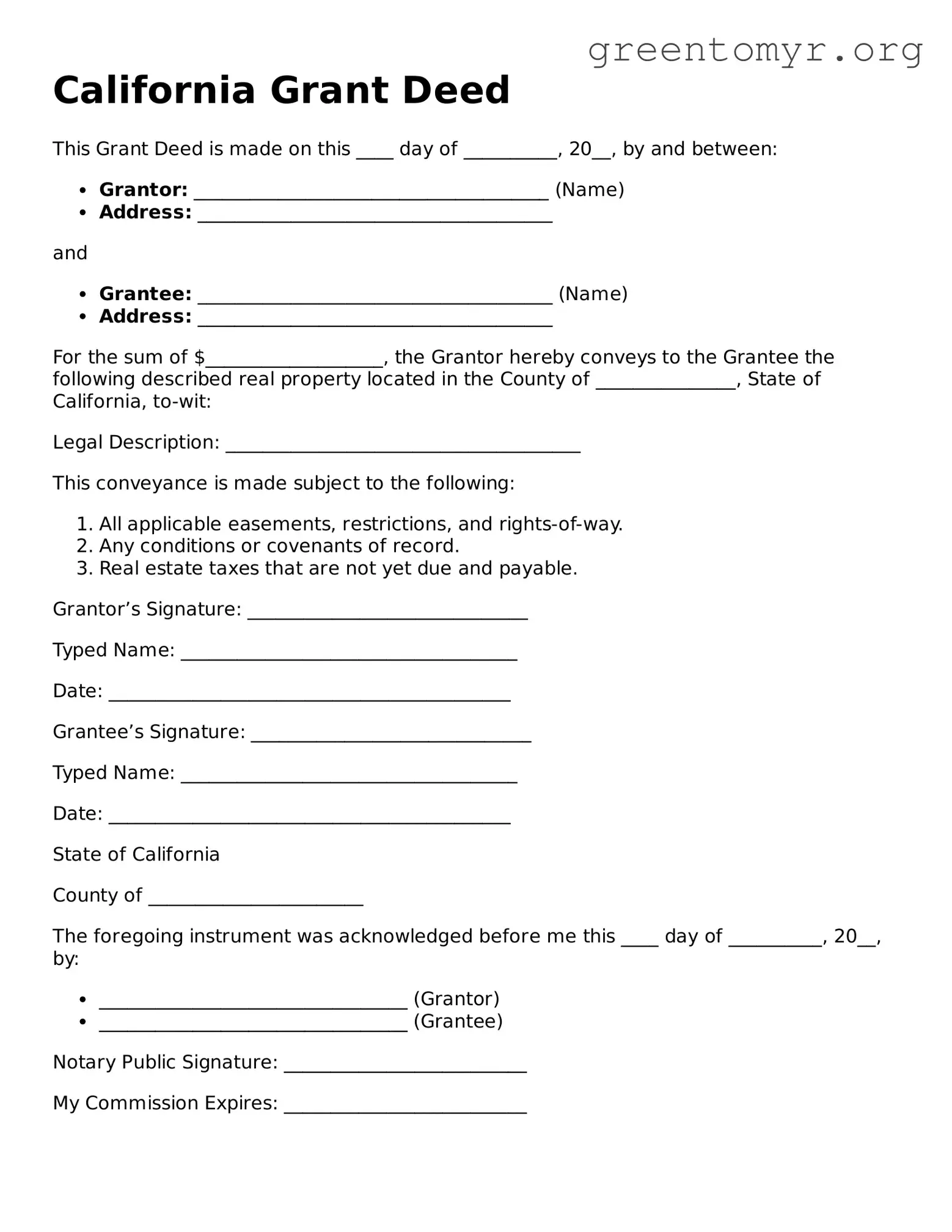California Grant Deed
This Grant Deed is made on this ____ day of __________, 20__, by and between:
- Grantor: ______________________________________ (Name)
- Address: ______________________________________
and
- Grantee: ______________________________________ (Name)
- Address: ______________________________________
For the sum of $___________________, the Grantor hereby conveys to the Grantee the following described real property located in the County of _______________, State of California, to-wit:
Legal Description: ______________________________________
This conveyance is made subject to the following:
- All applicable easements, restrictions, and rights-of-way.
- Any conditions or covenants of record.
- Real estate taxes that are not yet due and payable.
Grantor’s Signature: ______________________________
Typed Name: ____________________________________
Date: ___________________________________________
Grantee’s Signature: ______________________________
Typed Name: ____________________________________
Date: ___________________________________________
State of California
County of _______________________
The foregoing instrument was acknowledged before me this ____ day of __________, 20__, by:
- _________________________________ (Grantor)
- _________________________________ (Grantee)
Notary Public Signature: __________________________
My Commission Expires: __________________________
